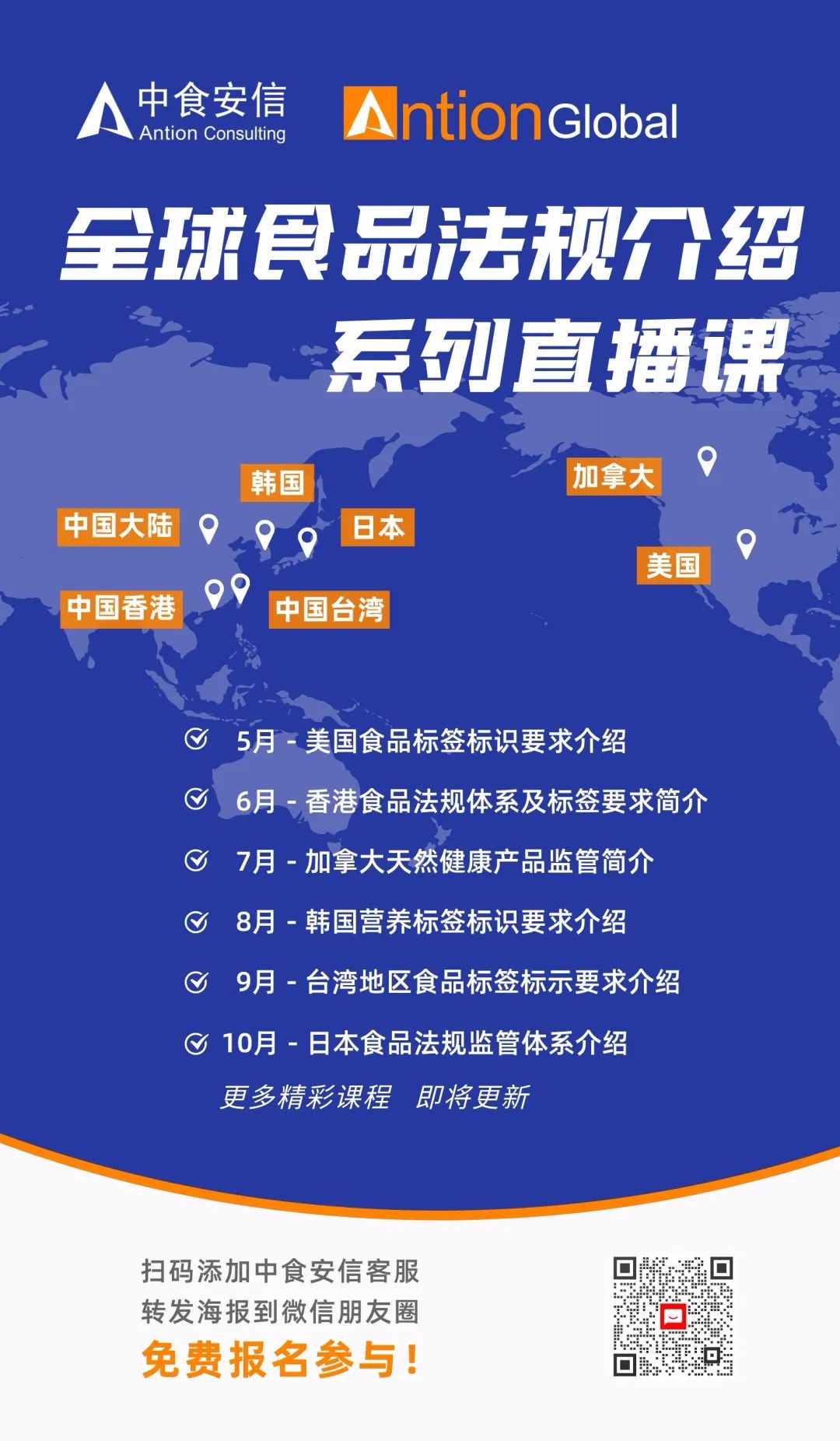Allergen labelling is mandatory in Korea. Antion sorted out the allergen-inducing substances, labelling methods and related Q&As stipulated by the MFDS for your reference.
The common substances causing food allergies are eggs and milk, accounting for 90% of allergies. On April 8, 2015, the MFDS announced the allergen-inducing substances. In 2020, pine nuts, which can cause severe allergies, was listed as an allergen-inducing substance, and there are currently a total of 19 allergens in Korea.
Allergen-inducing substance
Eggs (poultry only), milk, buckwheat, peanuts, soybeans, wheat, Scomber japonicus, crab, shrimp, pork, peaches, tomatoes, sulfites (limited to SO2 content in the final product exceeding 10mg/kg), walnuts, chicken, beef, squid, shellfish (including oysters, abalone and Mytilus edulis), pine nuts
Labelling of possible allergy-inducing substances mixed
During the production process, allergy-inducing substance products are used and not used (operators, appliances, production lines, raw materials storage, etc., including all production and manufacturing processes). When it is unavoidable to be mixed, it is required to mark "the product is manufactured at the same manufacturing facility as buckwheat products that can cause allergies", "there is a possibility of buckwheat mixing" and other precautions. However, if the raw material of the product is the above-mentioned allergy-inducing substance, it does not need to be marked.
Labelling method
Set up an allergy labelling column near the labelling column of the raw material names, which is distinguished from the background color and has nothing to do with the amount of allergy-inducing substances contained in the product. All allergy-inducing substances used as raw materials should be marked. However, if the product name of the food, packaged meat and imported meat manufactured and processed with a single raw material is the same as that of the raw material subject to the allergy labelling, the labelling of allergy-inducing substances may be omitted.
(Example)

Translation: containing peaches and pork

Translation: the product is manufactured at the same manufacturing facility as milk and peanuts.
Common Q&As
1. If imported cheeses are made from goat's milk and sheep milk, is it required to mark goat’s milk and sheep milk with allergy-inducing substances?
l "Milk" belongs to the labelling object of allergy-inducing substance, and "goat's milk" or "sheep milk" does not belong to the allergy-inducing substance. Therefore, products that use "goat's oil" or "sheep oil" do not need to be marked "goat's milk" or "sheep milk" allergens.
2. Can the allergy-causing substances be marked on the right side of the raw material names on the wrapping paper and stickers of sauced and pickled foods?
Set up an allergy labelling column near the labelling column of the raw material names, which is distinguished from the background color and has nothing to do with the amount of allergy-inducing substances contained in the product. All allergy-inducing substances used as raw materials should be marked. It is inappropriate to set up a labelling column on the right side of the relevant raw material names.
3. Can a manufacturer mark unused allergy-inducing substances when cross-using manufacturing facilities that may result in allergy-mixing?
l During the production process, allergy-inducing substance products are used and not used (operators, appliances, production lines, raw materials storage, etc., including all production and manufacturing processes). When it is unavoidable to be mixed, it is required to mark precautions. At the same time, in order to provide correct information for consumers and prevent confusion, it is inappropriate to arbitrarily mark raw materials that cannot be mixed.
4. In the case of using compound ingredients that may be mixed with allergen substances in the product, does the final product need to be marked with allergens?
l If the product is manufactured and processed using compound raw materials that may be mixed with allergen-inducing substances, and the compound raw materials do not belong to the labeling object of allergen-inducing substances, it does not need to be marked. However, according to regulatory requirements, a possibility of mixing need to be marked.
Next week, Antion will have an online live coure on Introduction of the Marking Requirements for Nutrition Label in Korea.
Topic: Introduction of the Marking Requirements for Nutrition Label in Korea
Time: 14:00, August 11, 2022
Speaker: Luna Miao, Food regulations specialist, Antion Consulting
Contents:
l Food Nutrition Label Regulations in Korea
l Terms and Definition of Food Nutrition Label in Korea
l Contents and Requirements of Food Nutrition Label in Korea
l Penalties for Nutrition Label Identification Issue
Scan the QR code below and contact staff to sign up.
Forward the poster to Moments for free!

Introduction of Global Food Regulations Live Series
Schedule:
l May - Introduction of U.S. Food Labeling Requirements
l June - Hong Kong Food Regulatory System and FAQs
l July - Introduction of the Supervision of Natural Health Products in Canada
l August - Introduction of the Marking Requirements for Nutrition Labeling in Korea
l September - Introduction of Food Labeling Requirements in Taiwan Region
l October - Introduction of Food Regulations and Supervision System of Japan
More exciting courses will be updated soon

If you are interested, please feel free to contact us!
Hongtao Fei
Tel: 010-51301566
email: feiht@antion.net
Source: Antion
Note: This article is compiled by Antion, please indicate our source if reprint it.